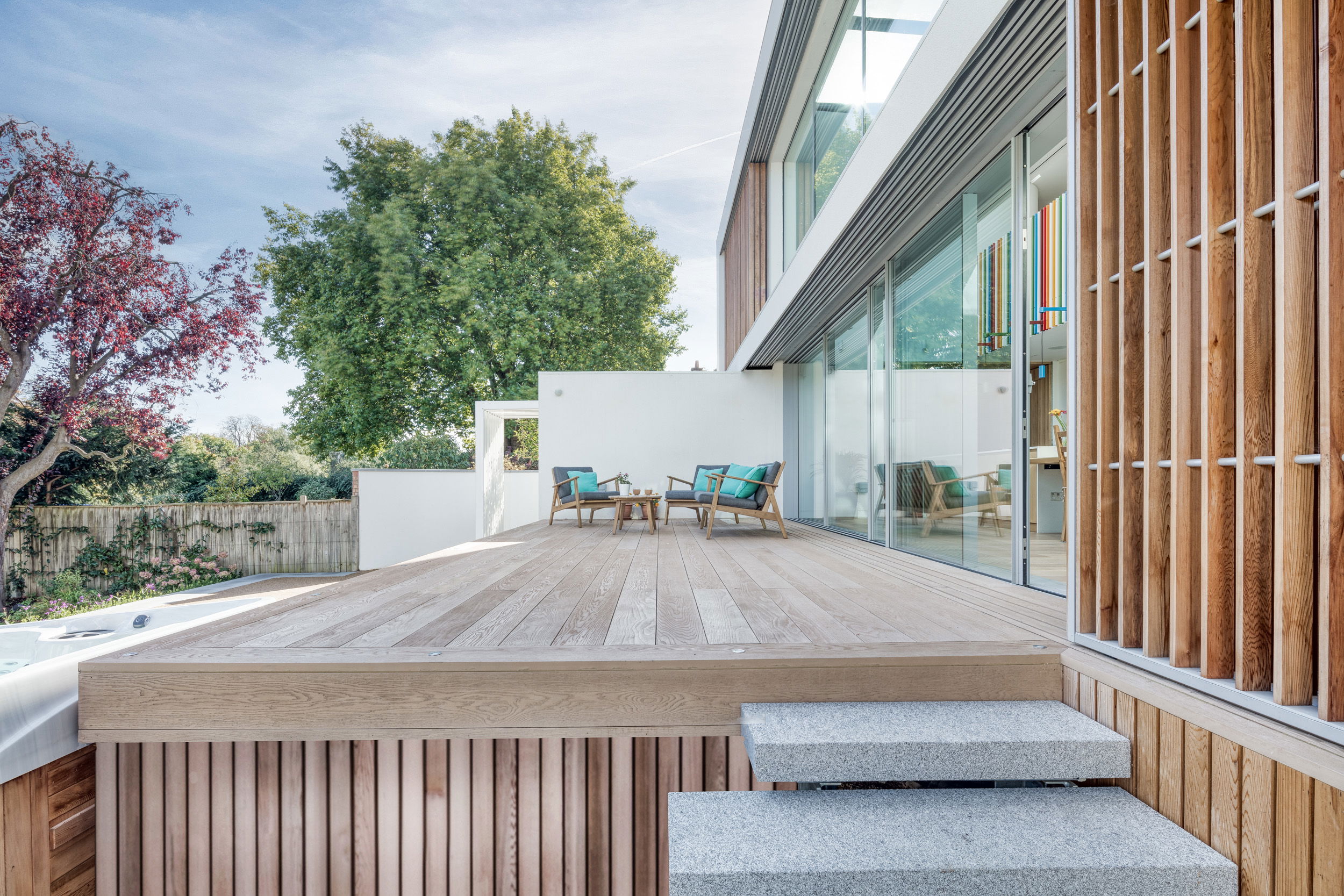
Fabric First.

What is Fabric First?
A Fabric First approach means designing the building – the materials and components from which it is made – to the highest standard possible before considering any electrical, mechanical or technological system integrations.
By designing the fabric (sometimes referred to as the envelope of the building) to an exceptional standard within the given scope and budget minimises the building’s future energy consumption. This approach requires minimal reliance on technology, and any technology utilised is designed for optimal efficiency.

Considerations in a Fabric First Approach.
Our architects and technologists collaborate holistically in the design process of a new home, focusing on enhancing air tightness to maximize energy efficiency, minimizing solar gains during the summer to maintain comfortable indoor temperatures, ensuring exceptional levels of insulation for superior thermal performance, optimizing natural ventilation to promote a healthy and comfortable living environment, utilizing thermal mass for effective heat absorption, storage, and release, and analyzing the ideal orientation of the building in relation to the sun’s path and wind direction, which significantly contributes to the effectiveness of the fabric first approach and subsequently impacts the energy consumption of the home.

Impacting Wellness.
The benefits of designing a building with energy efficiency as a central focus extend beyond minimising energy consumption. Such intelligently designed buildings are easier for homeowners to manage. Occupants do not have to rely on complex technology to address issues like overheating because the design itself prevents such problems from occurring. User comfort is prioritised, eliminating the need for homeowners to adapt their behavior to operate the building. Living in such a building feels intuitive, natural, and incredibly comfortable.

Passive Design.
The Fabric First approach emphasises passive design strategies that utilise the natural elements such as sunlight, shading, and ventilation to regulate the indoor environment. By optimising the building fabric, passive solar gain, day lighting, and natural ventilation can be effectively utilised to reduce the need for artificial lighting, heating, and cooling.


